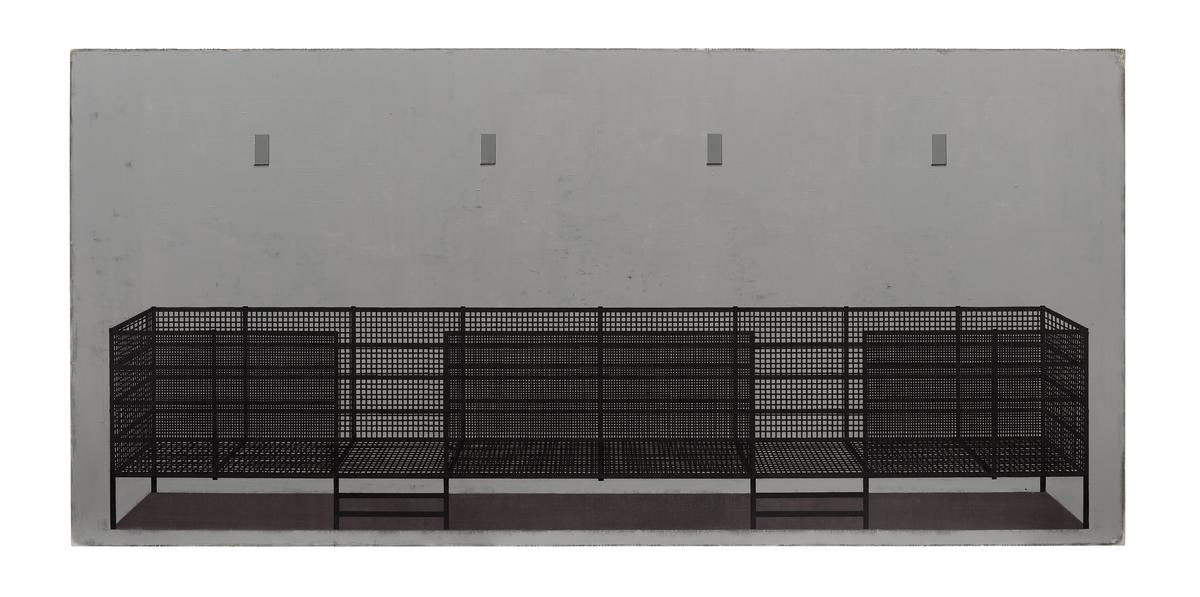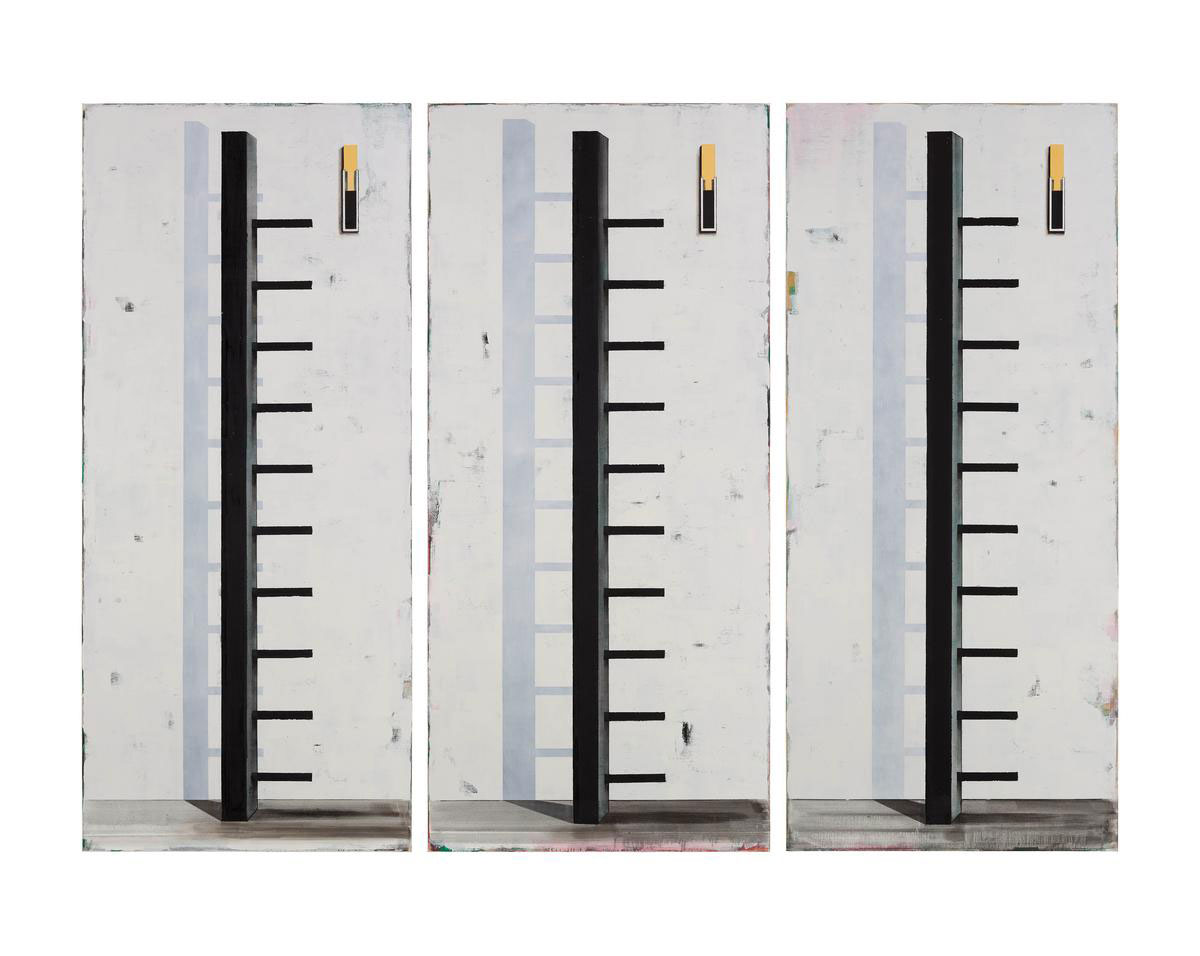ART CITIES:London-Michael Simpson
 For the past 30 years Michael Simpson has explored ideas relating to what he describes as “The infamy of religious history”. Rooted in a fascination with 15th Century Venetian and early Flemish Painting, and inflected by the formal restraint and reduced palette of Minimalism, Simpson had developed a distinctive, darkly comedic artistic vocabulary with which to create works that move beyond their subject matter to question the nature of painting itself.
For the past 30 years Michael Simpson has explored ideas relating to what he describes as “The infamy of religious history”. Rooted in a fascination with 15th Century Venetian and early Flemish Painting, and inflected by the formal restraint and reduced palette of Minimalism, Simpson had developed a distinctive, darkly comedic artistic vocabulary with which to create works that move beyond their subject matter to question the nature of painting itself.
By Dimitris Lempesis
Photo: Blain|Southern Archive

Michael Simpson in his solo exhibition “New Paintings” presents a significant body of new work, including a group of large-scale “Squint” paintings. Michael Simpson is an artist whose practice is characterised by a reduced palette and a distinctive vocabulary in which Benches, Confessionals and Squints are recurring motifs explored through different series of works. Whilst Simpson’s apparent subject is the infamy of religious history and the politics of belief, these subjective references provide only a subtext for his principal subject: the mechanics of painting. Squint relates to an architectural feature of medieval churches, a tall, slim opening in a wall which allowed leper’s to observe religious services without contaminating the wider congregation. In each of the quint paintings we the viewer are placed in the position of the leper, facing a structure, a ladder or steps we are left to wait and wonder what, if anything lies beyond the squint. By focussing on the structure and formal elements of the painting, Simpson asks how a flat surface can conjure an illusion of space. And he takes that idea further to ask why we derive so much pleasure from that illusion? If illusions of physical depth propose metaphysical depth, what might that imply about the structure of our perceptions, our tendency to believe? Simpson’s ladders might suggest that there is no way to lift ourselves beyond the constraints of sense perception, and that our belief systems must be kept in check by acknowledging these limits. To look at many of Simpson’s paintings is to see-saw between abstraction and representation, between depth and flatness. The artist’s key motifs are reduced to their essential geometry and situated in similarly pared-down environments. Forms float, apparently suspended in space; elsewhere light, shadow and perspective root objects to the ground. Similarly, the precisely wrought illusion in some works gives way to a much looser rendering of the image in others. The use of larger than life-size scale of many of these works engenders a strong physical engagement; a sense that we could literally step into these exact yet indeterminate spaces. Simpson calls attention to the mechanics of painting, the deceptive force of the constructed image. “Squint 62” (2019) is a subdued composition of greys and blacks. Fine black lines form a mesh platform from which to access four squints set into a solid grey wall. Whilst there are never any figures in Simpson’s paintings, the size of work, which spans 5 metres, is an example of how he uses scale to bring the idea of human presence into play–placing the viewer at the scene, reminding them of the possibility that someone could have occupied the space or may be about to do so. “Squint 64” (2019) achieves a powerful mood of balance and harmony through the precise rendering of light and space. Despite a restricted color palette, Simpson evokes a variety of materials. In “Confessional 6” (2019) the confessional box, folding metal door and rectangular shadows combine to form a composition that brings to mind the same ‘seeing/not seeing’ paradox evoked by the squints.
Info: Blain|Southern Gallery, 4 Hanover Square, London, Duration 2/10-16/11/19, Days & Hours: Mon-Fri 10:00-18:00, Sat 10:00-17:00, www.blainsouthern.com

